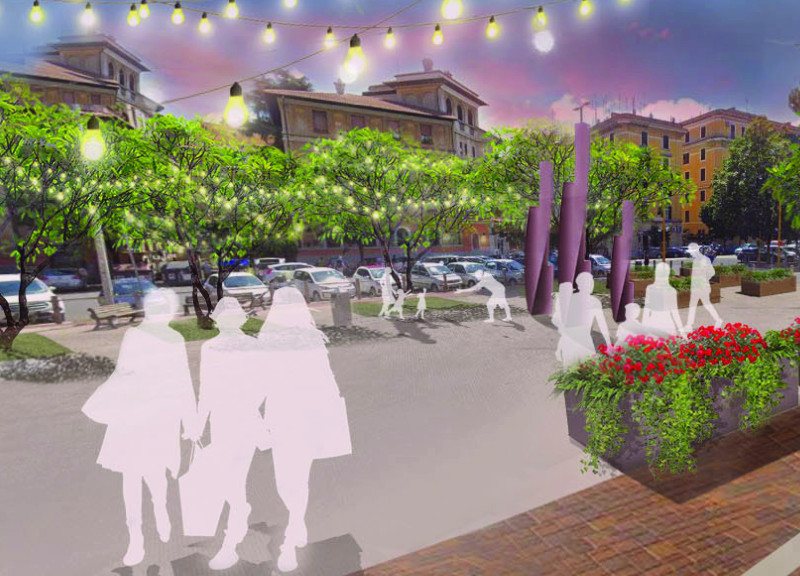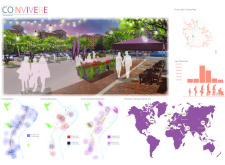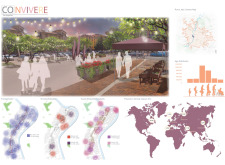5 key facts about this project
Community-Centric Design
One defining characteristic of the CONVIVERE project is its dedication to a community-centric design. The layout facilitates pedestrian movement through a network of interconnected pathways and public squares, making it easy for people to navigate the space and engage with one another. The provision of communal areas, such as outdoor seating and dining amenities, encourages residents and visitors to gather and interact, thereby strengthening community ties.
The unique integration of green spaces within the urban fabric differentiates this project from typical developments. Landscaped areas, including parks and green roofs, contribute to biodiversity while providing essential outdoor spaces for recreation and relaxation. This emphasis on nature within urban settings reflects a growing trend toward sustainable architecture that aims to mitigate urban heat and improve air quality.
Sustainable Materiality
The material selection in the CONVIVERE project emphasizes durability and environmental responsibility. Key materials used include reinforced concrete for structural elements, natural stone for landscaping and paving, and glass to create transparent building facades that enhance visual connectivity between inside and outside. Wood accents add warmth and texture, complementing the modern aesthetic of the design.
The architectural details illustrate a commitment to sustainability, with low-maintenance materials and features that reduce long-term environmental impact. This consideration ensures the longevity of the project and minimizes the need for resource-intensive upkeep. The design also incorporates passive cooling strategies and energy-efficient systems to enhance the overall sustainability of the built environment.
Integrated Public Spaces
The CONVIVERE project features a well-defined mixed-use strategy, combining living, working, and leisure spaces that cater to a diverse demographic. Commercial establishments are interspersed among residential units, promoting economic vitality within the neighborhood. The design includes elements such as integrated parks and plazas designed to serve as social hubs for gatherings and community events.
Access to public transport is crucial to the project, with various transportation nodes carefully integrated into the layout. Well-considered pedestrian pathways ensure safety and ease of movement throughout the site. This focus on connectivity not only benefits residents but also supports local businesses, fostering a lively atmosphere.
For further insights into the architectural plans, sections, and unique design strategies of the CONVIVERE project, interested readers are encouraged to explore the detailed project presentation. This resource provides an in-depth understanding of the design intentions and functional aspects that define this urban initiative.


























